|
|







|
|
| The
nuraghe civilisation lasted almost a thousand years (1800-1000
BC) and took its name from the nuraghe, a tower-shaped structure
that it still characteristic and emblematic of the island today.
It
began in the early Bronze age and ended with the appearance of
Iron Age civilisation. Around B.C. 1800, at the down of the
Bronze age, there misteriously flourished a new civilisation
know as the Nuragic.
|
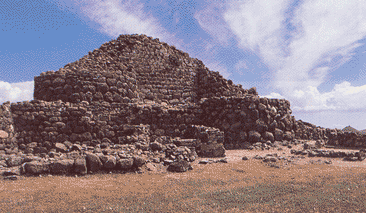
Barumini's
nuraghe - "SU NURAXI"
|
|
Judging
by the migthy stone towers called nuraghe
scattered all over Sardinia and the refined worksmanship of their bronze
statuettes cast
by means of the cire perdue (lost wax) technique, they
must have attained a high organisational and artistic
leve. |
|
| Whit
it great architecture the nuraghe is one of the most
extraordinari phenomena of the ancient Mediterranean
world. The civilisation that producer it, drawing
inspiration and mood from the previous culture of the
Copper Age, when through various stage of development and
grew originality both
in
its own right and as
a
result of the various relationship with many peoples
and
culture
in the Europe and the Mediterranean (among these the
Myceneans).
|
|
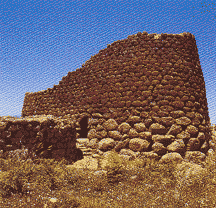
LOSA
nuraghe
|
|
|
At every step of that long
way it lived free and independent, indeed one
might say that
the period of the nuraghi was the only true
moment of political self government in the national
history of Sardinia.The constellation of over
seven thousand nuraghi (buildings for military and civil use ) represents the maximum
socio-economic effort and the most rational result of
territorial organisation achieved
by the local mind in long centuries of planning
activity. |
|
| Residential
settlements were founded and organised in the vicinity of nearly all the
nuraghi, where they occupants formed a community. In the case of the simple tower structure, it
was the central point administering
agricultural and pastoral assets, as well as the
mining resources in metalliferous areas.
Some
historians maintain that the arrival of Phoenician
sailors induced the people of the nuraghi to transform
their single towers perched on hills and high ground
into castle fortresses, as
at Barumini's
|
|
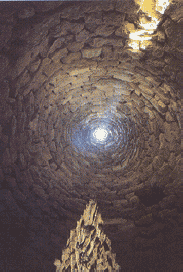
|
|
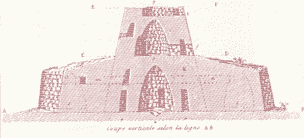 |
|
Su
Nuraxi, the Santu Antine complex and Genna Maria
village at Villanovaforru. The main tower was
surronded by others linked
by Ciclopean walls.
|
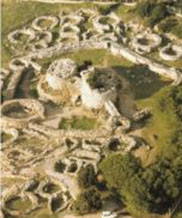
Nuragic
complex with village "PALMAVERA"
|
|
Huddled
outside were villages
composed of as many as two hundred stone huts. The Nuragic society
resembled that of the Achaeans described by Homer.
Small states were ruled by a shepherd king and a
councilof elders. He wielded
political, religious
and military power over nobles, priests and
common folk. Slaves, probably prisoners of war,
may well have been used to build the nuraghi.
How
this was done is unknown. In articulated
structures comprising several towers (in castle formation), connected to from a system, the
nuraghe acted
as a stronghold that
defended the joint and superior
interest of political-administrative cantos
(or district),
|
|
|
| governed
by tribal leaders or monarchs. Outstanding
for the complexity of structure and
grandiosity of form, their maze of rooms with domed roofs, sometimes
connected by spectacular
corridors, are the nuraghi
of Su Nuraxi (Barumini), Santu Antine (Torralba),
Losa (Abbasanta), Nolza (Meana).
|
|
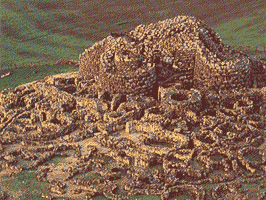
Barumini's
nuraghe - "SU NURAXI"
|
|
|


|
|
|